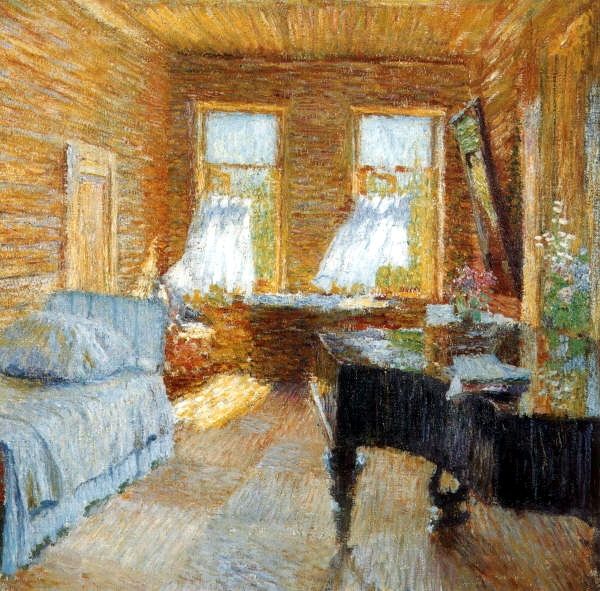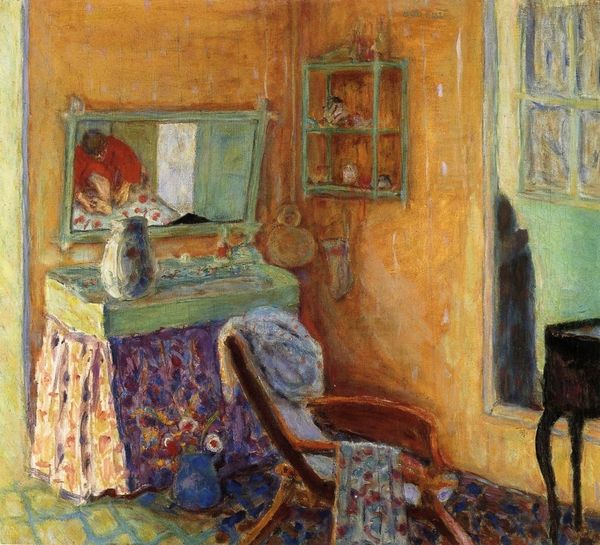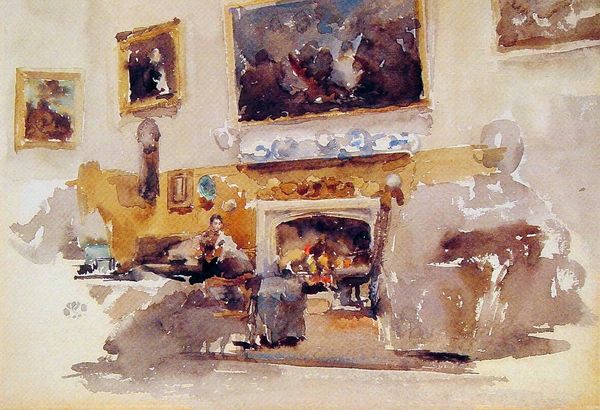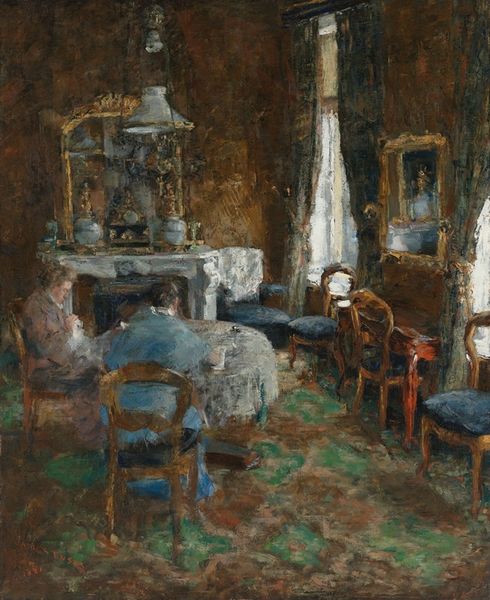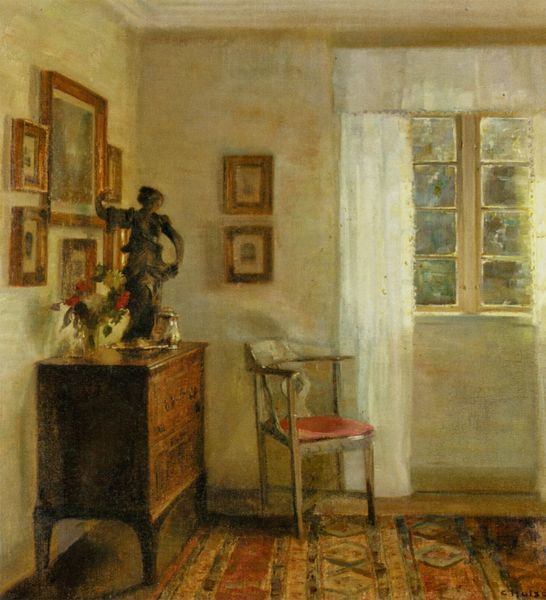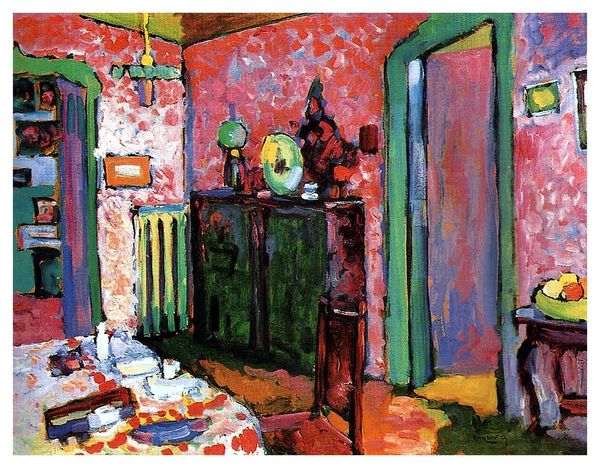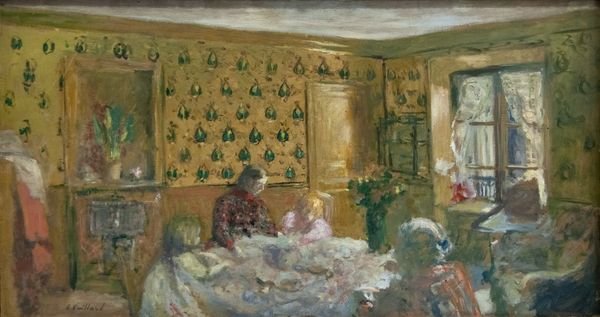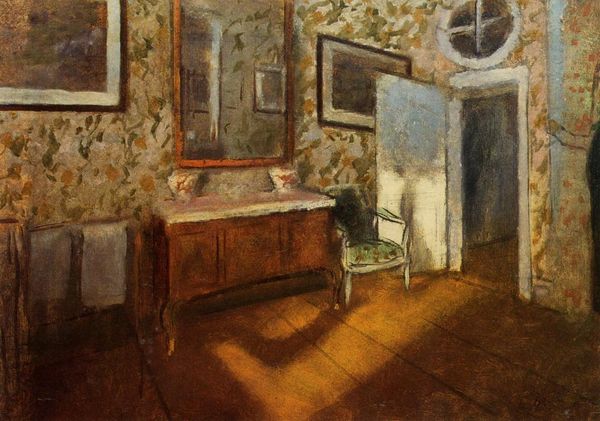
Copyright: Public domain
Editor: This is Konstantin Korovin’s "Interior," painted in 1913 using oil paint. It strikes me as a very intimate and informal portrayal of domestic space. What social context was informing this particular piece? Curator: This work appears at the cusp of significant societal changes in Russia. While painted in an impressionistic style reminiscent of Western European trends, it depicts a uniquely Russian, perhaps even rural, interior. It prompts the question: who was this space for, and who was viewing it? Editor: That's a great point. The interior *does* seem humble and lived-in, not grand or staged like some of the interiors we see in Western art of the time. It almost feels… democratic. Curator: Precisely! How does this unidealized depiction of everyday life speak to a rising sense of national identity, or perhaps a shift in the patronage of the arts in Russia at the time? Korovin’s impressionism, imported from the West, here captures something distinctly Russian. Editor: I hadn't thought about it in terms of national identity, but that makes so much sense! Were works like this generally accessible to the public, or more for a private audience? Curator: Good question! The art world in Russia then was becoming increasingly public, with more open exhibitions and discussions about art’s role in society. A piece like this could be seen as an attempt to democratize representation, to make art reflect the lives of ordinary people and invite wider viewership. The very display of ‘interior’ as subject matter signals a critical re-evaluation of the role of art itself. Editor: I see. So, it wasn't just about painting pretty pictures, but about engaging with a broader public and representing a specific cultural reality. It reframes impressionism as something more than just an aesthetic choice. Curator: Exactly! Thinking about art in terms of its social and political context gives us a richer understanding of its meaning and significance. Editor: This conversation has definitely broadened my perspective. I’ll be thinking about the public role of art much more critically.
Comments
No comments
Be the first to comment and join the conversation on the ultimate creative platform.

